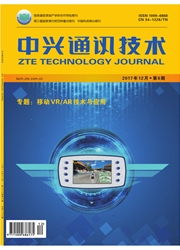

 中文摘要:
中文摘要:
文章介绍了由欧盟第七框架(FP7)项目EFIPSANS提出的具有自治属性的未来自管理互联网的结构和机制。该结构将网络的功能分成决策、分发、发现及数据等4个平面。位于不同平面的决策单元和被管理实体及其他信息收集实体组成协议层、功能层、节点层及网络层等4个层次的控制环。决策单元及其相关的控制环和被管理的实体实现了网络对自身的管理和维护,大大减少用户和管理员对网络的干预,从而降低网络的运营成本,提高终端用户的体验。目前欧洲电信标准组织(ETSI)成立了一个新的工业标准研究组,正在进行自管理互联网相关的标准化工作。
 英文摘要:
英文摘要:
This paper introduces the architecture and mechanism of future self-managing Internet. The architecture was proposed by the EU FP7 EFIPSANS project. It classifies network functions into four planes: decision, dissemination, discovery and data. Furthermore, four hierarchical controls are formed by the decision elements and managed entities in different functional planes. Decision elements and the corresponding control loops, as well as the managed entities, realize the function of self management and maintenance of the network. This decreases the need for intervention by end-users and network administrators, reduces the OPEX and improves the end-user experience. Currently, a newly founded ISG in ETSI AFI is devoting time to the development and standardization of the architecture.
 同期刊论文项目
同期刊论文项目
 同项目期刊论文
同项目期刊论文
 期刊信息
期刊信息
